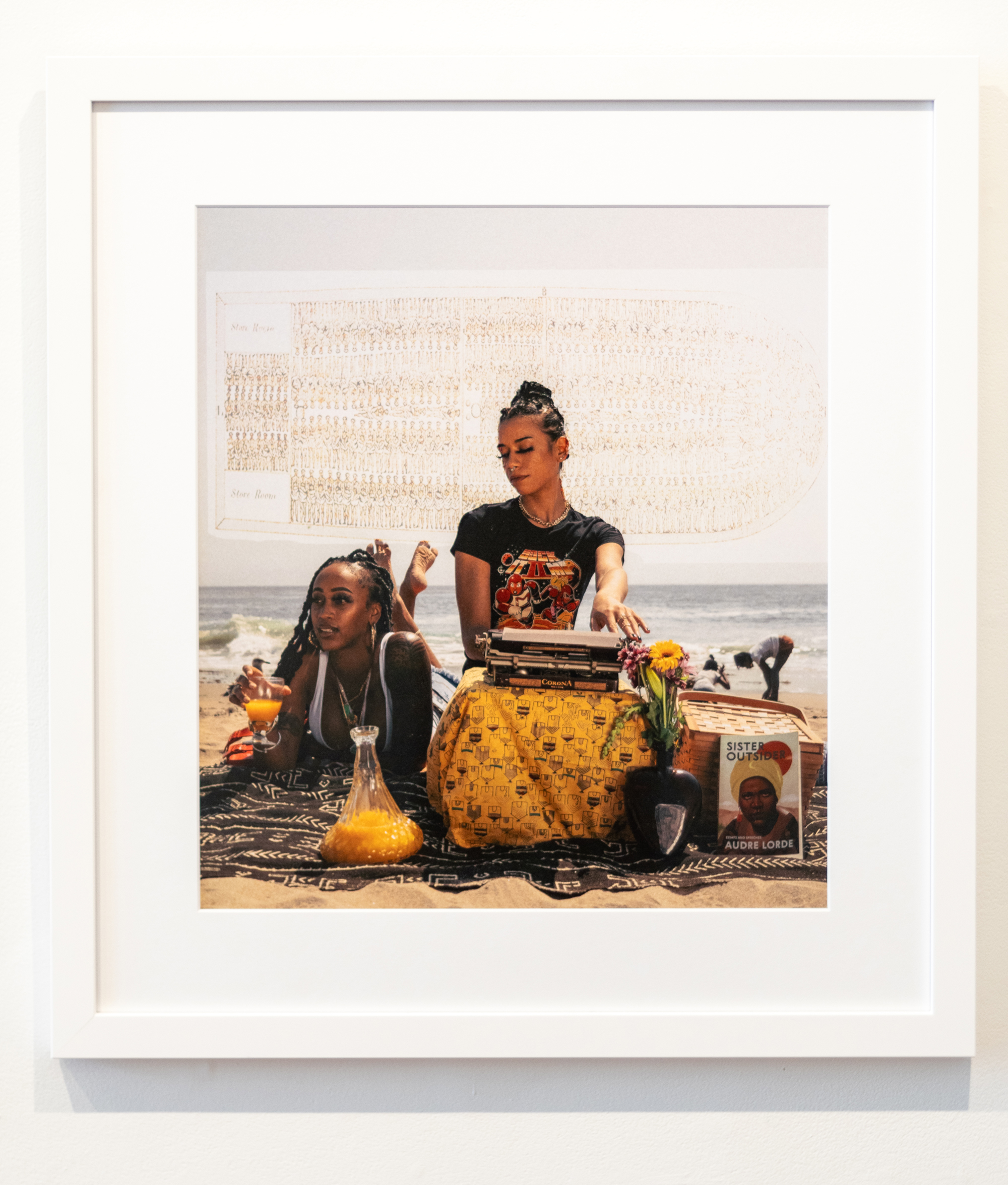In John Berryman’s “Dream Song 29,” the poem opens with a heaviness (“There sat down, once, a thing on Henry’s heart”) that the subject cannot dispel: “Ghastly, / with open eyes, he attends, blind.”
It’s this quality of existential unease, of being unable to either look away or end the source of discomfort, that curator Adrianne Ramsey had in mind while organizing With Open Eyes, a 14-person group show of Black artists at Root Division. She began working on the show, which includes photography, textiles, painting and video, after the murder of George Floyd by a Minneapolis police officer in May 2020.
In her curatorial essay, Ramsey recalls how videos of the murder were circulating on social media without any warnings about shocking violence of the content. She points to more recent examples of “Black trauma porn,” like the leaked video of music mogul Sean Combs beating his then-girlfriend Cassie Ventura in a hotel.

With Open Eyes is meant to be an opportunity for Black artists to tell their own stories, not ignoring all harm but allowing them to reframe “the narrative that said bodies only experience harm,” Ramsey writes.
Two oil paintings by local artist Michon Sanders lovingly depict her ancestors in dignified moments of rest. In Arthur Brown (But We Called Him Big Papa), Sanders’ great-great grandfather, a man who lived in rural Florida until the early 1900s, looks tranquil, with close-cropped gray hair, a beard and mustache. The background is a royal purple, enhancing his regal bearing.




